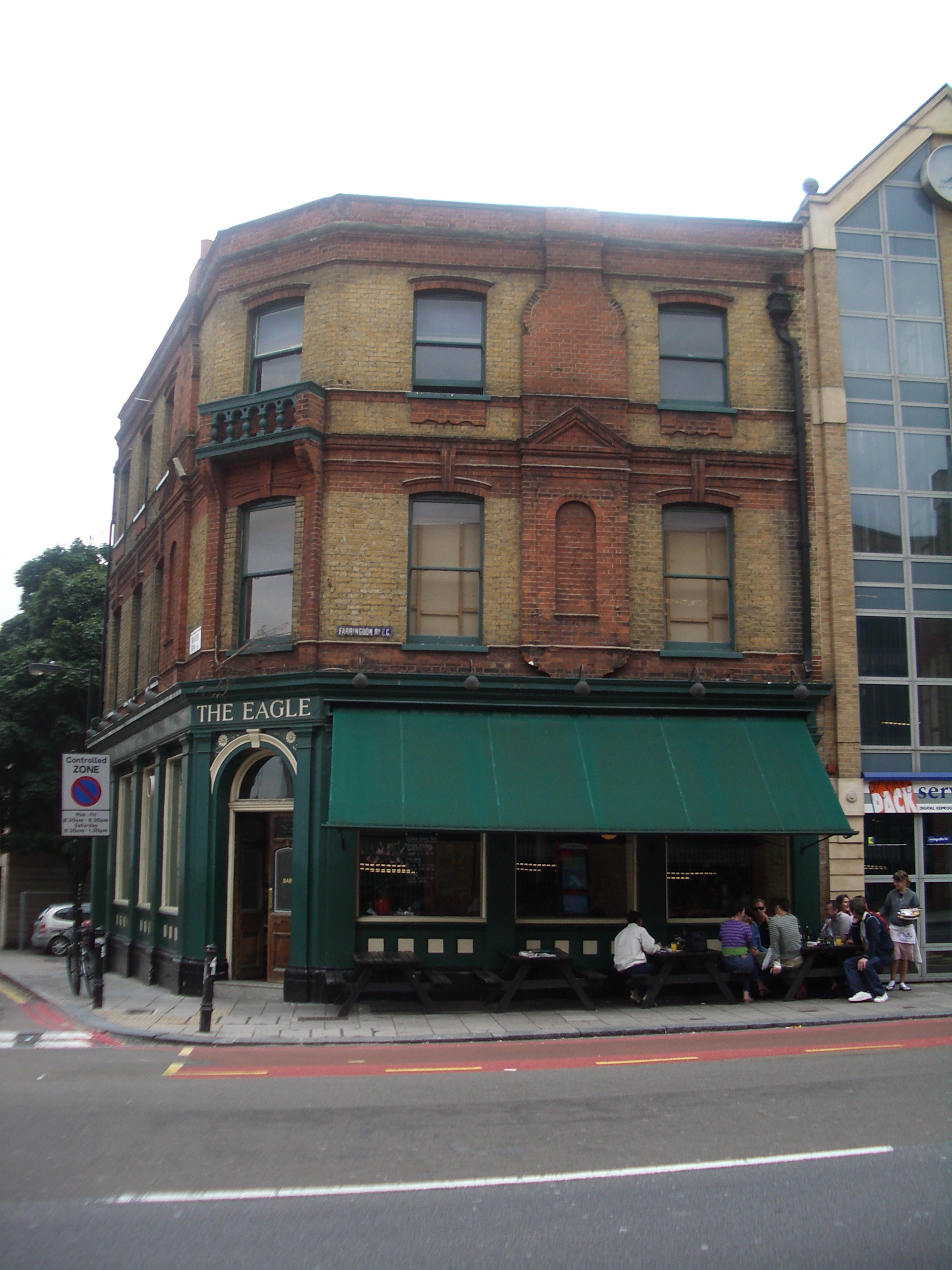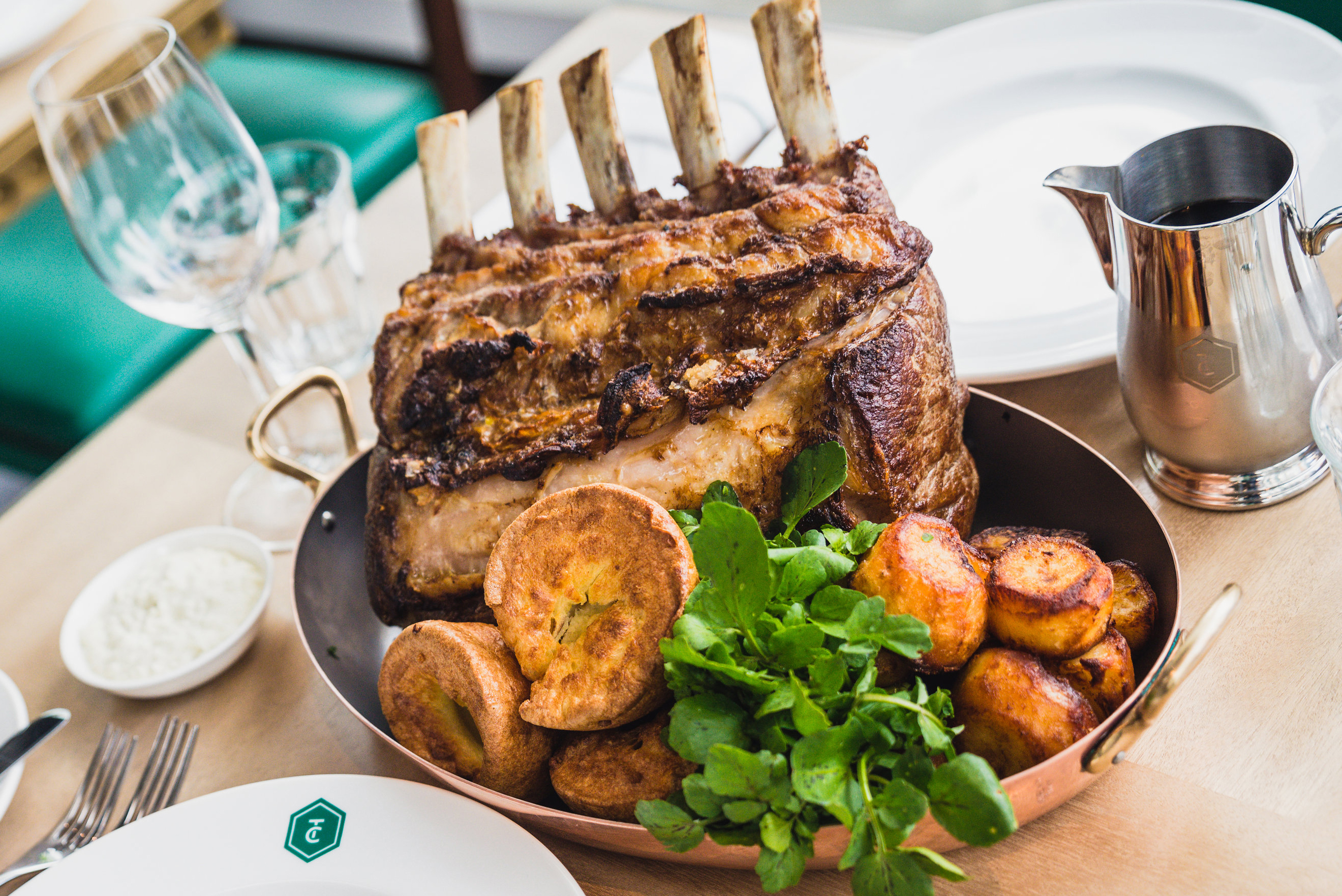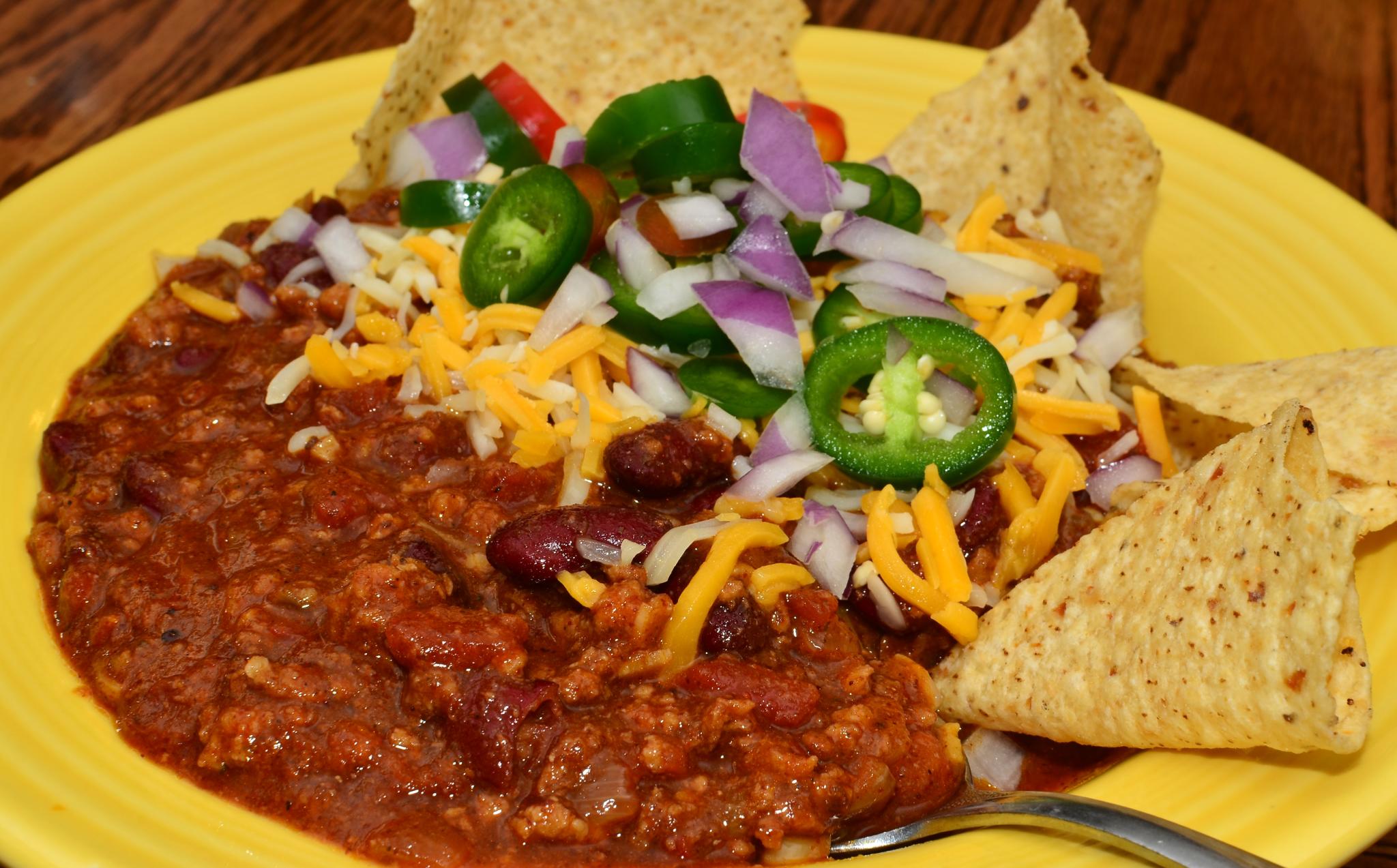|
Gastropub
A gastropub or gastro pub is a pub that serves gourmet comfort food. The term was coined in the 1990s, though similar brewpubs existed during the 1980s. Etymology The term ''gastropub'' (derived from gastronomy) was coined in 1991, when David Eyre and Mike Belben took over The Eagle pub in Clerkenwell, London. Traditionally, British pubs were drinking establishments and little emphasis was placed on the serving of food. If pubs served meals they were usually basic cold dishes such as a ploughman's lunch. The concept of gastropubs largely redefined both pub culture and British dining, and has occasionally attracted criticism for potentially removing the character of traditional pubs. "Pub grub" expanded to include British food items such as steak and ale pie, shepherd's pie, fish and chips, bangers and mash, Sunday roast, ploughman's lunch, and pasties. In addition, dishes such as hamburgers, chips, lasagne and chili con carne are now often served. In August 2012, ''gastropub' ... [...More Info...] [...Related Items...] OR: [Wikipedia] [Google] [Baidu] |
Clerkenwell
Clerkenwell () is an area of central London, England. Clerkenwell was an ancient parish from the mediaeval period onwards, and now forms the south-western part of the London Borough of Islington. The well after which it was named was rediscovered in 1924. The watchmaking and watch repairing trades were once of great importance. Geography Goswell Street formed the eastern boundary of the Clerkenwell parishes, with the River Fleet, now buried beneath Farringdon Road and other streets, forming the western boundary with Holborn and, in part, St Pancras. This western boundary with both neighbouring areas is now used as part of the London Borough of Islington’s western boundary with the London Borough of Camden. Pentonville is a part of northern Clerkenwell, while the southern part is sometimes referred to as Farringdon, after the railway station of that name – which was named after Farringdon Road (an extension of Farringdon Street) and originally named Farringdon Street S ... [...More Info...] [...Related Items...] OR: [Wikipedia] [Google] [Baidu] |
Eagle Gastropub Clerkenwell 2005
Eagle is the common name for many large birds of prey of the family Accipitridae. Eagles belong to several groups of genera, some of which are closely related. Most of the 68 species of eagle are from Eurasia and Africa. Outside this area, just 14 species can be found—2 in North America, 9 in Central and South America, and 3 in Australia. Eagles are not a natural group but denote essentially any kind of bird of prey large enough to hunt sizeable (about 50 cm long or more overall) vertebrates. Description Eagles are large, powerfully-built birds of prey, with heavy heads and beaks. Even the smallest eagles, such as the booted eagle (''Aquila pennata''), which is comparable in size to a common buzzard (''Buteo buteo'') or red-tailed hawk (''B. jamaicensis''), have relatively longer and more evenly broad wings, and more direct, faster flight – despite the reduced size of aerodynamic feathers. Most eagles are larger than any other raptors apart from some vultures. The smallest ... [...More Info...] [...Related Items...] OR: [Wikipedia] [Google] [Baidu] |
Sunday Roast
A Sunday roast or roast dinner is a traditional meal of British and Irish origin. Although it can be consumed throughout the week, it is traditionally consumed on Sunday. It consists of roasted meat, roasted potatoes and accompaniments such as Yorkshire pudding, stuffing, gravy, and condiments such as apple sauce, mint sauce, or redcurrant sauce. A wide range of vegetables can be served as part of a roast dinner, such as broccoli, Brussels sprouts, carrots, cauliflower, parsnips, or peas, which can be boiled, steamed, or roasted alongside the meat and potatoes. Mashed potatoes are also a frequent accompaniment. The Sunday roast's prominence in British culture is such that in a UK poll in 2012 it was ranked second in a list of things people love about Britain. Other names for this meal include ''Sunday lunch'', ''Sunday dinner'', ''roast dinner,'' and ''full roast''. The meal is often comparable to a less grand version of a traditional Christmas dinner. Besides being ser ... [...More Info...] [...Related Items...] OR: [Wikipedia] [Google] [Baidu] |
List Of Public House Topics
A ''list'' is any set of items in a row. List or lists may also refer to: People * List (surname) Organizations * List College, an undergraduate division of the Jewish Theological Seminary of America * SC Germania List, German rugby union club Other uses * Angle of list, the leaning to either port or starboard of a ship * List (information), an ordered collection of pieces of information ** List (abstract data type), a method to organize data in computer science * List on Sylt, previously called List, the northernmost village in Germany, on the island of Sylt * ''List'', an alternative term for ''roll'' in flight dynamics * To ''list'' a building, etc., in the UK it means to designate it a listed building that may not be altered without permission * Lists (jousting), the barriers used to designate the tournament area where medieval knights jousted * ''The Book of Lists'', an American series of books with unusual lists See also * The List (other) * Listing (di ... [...More Info...] [...Related Items...] OR: [Wikipedia] [Google] [Baidu] |
Brasserie
In France, Flanders, and the Francophone world, a brasserie () is a type of French restaurant with a relaxed setting, which serves single dishes and other meals. The word ''brasserie'' is also French for "brewery" and, by extension, "the brewing business". A brasserie can be expected to have professional service, printed menus, and, traditionally, white linen—unlike a bistro which may have none of these. Typically, a brasserie is open Wednesday to Sunday and serves the same menu all day. A classic example of a brasserie dish is steak frites. Etymology The term ''brasserie'' is French for "brewery", from Middle French ''brasser'' "to brew", from Old French ''bracier'', from Vulgar Latin ''braciare'', of Celtic origin. Its first usage in English was in 1864. The origin of the word probably stems from the fact that beer was brewed on the premises rather than brought in: thus an inn would brew its own beer as well as supply food and invariably accommodation too. In 1901 ''Cham ... [...More Info...] [...Related Items...] OR: [Wikipedia] [Google] [Baidu] |
Victoria, British Columbia
Victoria is the capital city of the Canadian province of British Columbia, on the southern tip of Vancouver Island off Canada's Pacific coast. The city has a population of 91,867, and the Greater Victoria area has a population of 397,237. The city of Victoria is the 7th most densely populated city in Canada with . Victoria is the southernmost major city in Western Canada and is about southwest from British Columbia's largest city of Vancouver on the mainland. The city is about from Seattle by airplane, seaplane, ferry, or the Victoria Clipper passenger-only ferry, and from Port Angeles, Washington, by ferry across the Strait of Juan de Fuca. Named for Queen Victoria, the city is one of the oldest in the Pacific Northwest, with British settlement beginning in 1843. The city has retained a large number of its historic buildings, in particular its two most famous landmarks, the Parliament Buildings (finished in 1897 and home of the Legislative Assembly of British Columbia ... [...More Info...] [...Related Items...] OR: [Wikipedia] [Google] [Baidu] |
Chili Con Carne
Chili con carne (also spelled chilli con carne or chile con carne and shortened to chili or chilli; ), meaning " chili with meat", is a spicy stew containing chili peppers (sometimes in the form of chili powder), meat (usually beef), tomatoes and often pinto beans or kidney beans. Other seasonings may include garlic, onions, and cumin. The dish originated in northern Mexico or southern Texas. Geographic and personal tastes involve different types of meat and other ingredients. Recipes provoke disputes among aficionados, some of whom insist that the word ''chili'' applies only to the basic dish, without beans and tomatoes. Chili con carne is a common dish for cook-offs, and may be used as a side, garnish, or ingredient in other dishes, such as soups or salsas. Origins and history In writings from 1529, the Franciscan friar Bernardino de Sahagún described chili pepper-seasoned stews being consumed in the Aztec capital, Tenochtitlan, now the location of Mexico City. The use of b ... [...More Info...] [...Related Items...] OR: [Wikipedia] [Google] [Baidu] |
Lasagne
Lasagna (, also , also known as lasagne, ) is a type of pasta, possibly one of the oldest types, made of very wide, flat sheets. Either term can also refer to an Italian dish made of stacked layers of lasagna alternating with fillings such as ragù (ground meats and tomato sauce), vegetables, cheeses (which may include ricotta, mozzarella, and parmesan), and seasonings and spices. The dish may be topped with grated cheese, which becomes melted after baking. Typically cooked pasta is assembled with the other ingredients and then baked in an oven. The resulting baked pasta is cut into single-serving square portions. Origins and history Lasagna originated in Italy during the Middle Ages. The oldest transcribed text about lasagna appears in 1282 in the ''Memoriali Bolognesi'' ("Bolognesi Memorials"), in which lasagna was mentioned in a poem transcribed by a Bolognese notary; while the first recorded recipe was set down in the early 14th-century ''Liber de Coquina'' (''The Book of ... [...More Info...] [...Related Items...] OR: [Wikipedia] [Google] [Baidu] |
French Fries
French fries (North American English), chips (British English), finger chips ( Indian English), french-fried potatoes, or simply fries, are '' batonnet'' or ''allumette''-cut deep-fried potatoes of disputed origin from Belgium and France. They are prepared by cutting potatoes into even strips, drying them, and frying them, usually in a deep fryer. Pre-cut, blanched, and frozen russet potatoes are widely used, and sometimes baked in a regular or convection oven; air fryers are small convection ovens marketed for frying potatoes. French fries are served hot, either soft or crispy, and are generally eaten as part of lunch or dinner or by themselves as a snack, and they commonly appear on the menus of diners, fast food restaurants, pubs, and bars. They are often salted and may be served with ketchup, vinegar, mayonnaise, tomato sauce, or other local specialities. Fries can be topped more heavily, as in the dishes of poutine or chili cheese fries. French fries can be made from ... [...More Info...] [...Related Items...] OR: [Wikipedia] [Google] [Baidu] |
Hamburger
A hamburger, or simply burger, is a food consisting of fillings—usually a patty of ground meat, typically Ground beef, beef—placed inside a sliced bun or bread roll. Hamburgers are often served with cheese, lettuce, tomato, onion, pickles, bacon, or chilis; condiments such as ketchup, mustard, mayonnaise, relish, or a "special sauce," often a variation of Thousand Island dressing; and are frequently placed on Bun, sesame seed buns. A hamburger patty topped with cheese is called a cheeseburger. The term ''burger'' can also be applied to the meat patty on its own, especially in the United Kingdom, where the term ''patty'' is rarely used or can even refer to ground beef. Since the term ''hamburger'' usually implies beef, for clarity ''burger'' may be prefixed with the type of meat or meat substitute used, as in beef burger, Turkey as food, turkey burger, bison burger, Portobello mushroom, portobello burger, or veggie burger. In Australia and New Zealand, a piece of chicken b ... [...More Info...] [...Related Items...] OR: [Wikipedia] [Google] [Baidu] |
Pasty
A pasty () is a British baked pastry, a traditional variety of which is particularly associated with Cornwall, South West England, but has spread all over the British Isles. It is made by placing an uncooked filling, typically meat and vegetables, on one half of a flat shortcrust pastry circle, folding the pastry in half to wrap the filling in a semicircle and crimping the curved edge to form a seal before baking. The traditional Cornish pasty, which since 2011 has had Geographical indications and traditional specialities in the European Union, Protected Geographical Indication (PGI) status in Europe, is filled with beef, sliced or diced potato, rutabaga, swede (also known as yellow turnip or rutabaga – referred to in Cornwall and other parts of the West Country as turnip) and onion, seasoned with salt and pepper, and baking, baked. Today, the pasty is the food most associated with Cornwall. It is a traditional dish and accounts for 6% of the Cornish food economy. Pasties wit ... [...More Info...] [...Related Items...] OR: [Wikipedia] [Google] [Baidu] |





_VICTORIA_FROM_JAMES'_BAY_LOOKING_UP_GOVERNMENT_STREET.jpg)


.jpg)
